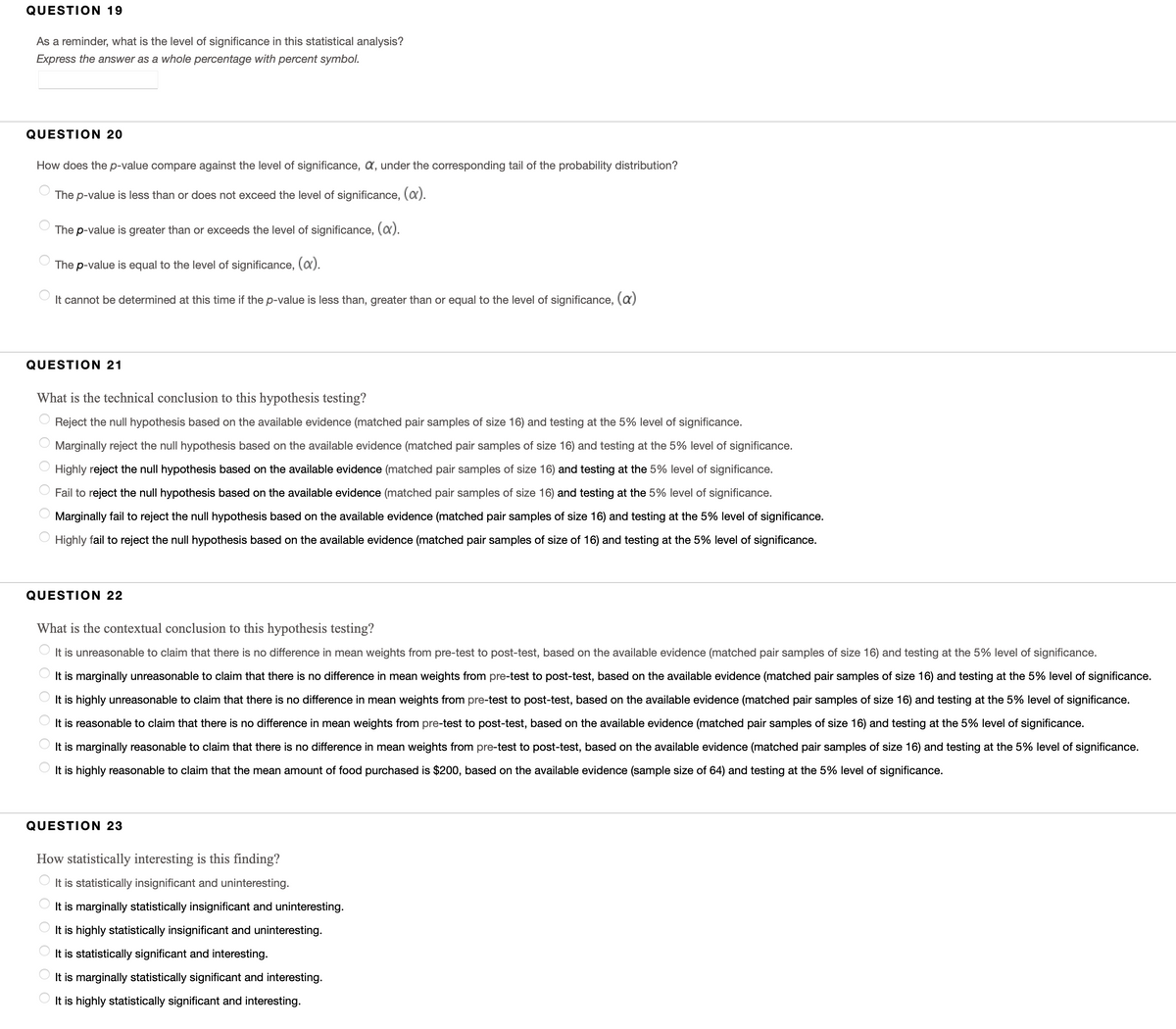Directions: Answer the following questions and solving the following problems for the following context. After medically-supervised obese adults leave a six-month in-patient treatment program of diet and exercise to foster healthy weight loss, these patients are monitored as they transition back into their own homes. Clinical dieticians are curious if there is significant additional weight loss during the next month of home care. A random sample of 16 adults includes the following data, in pounds, which measures their weights immediately upon leaving the in-patient program (pre-test) and again after one month of home maintenance of the weight loss program (post-test). Pre-Test 315 280 350 300 420 380 225 360 Post-Test 295 285 335 320 400 350 225 340 Pre-Test 295 360 240 305 310 255 300 360 Post-Test 280 345 245 320 300 250 305 360 At the 5% level of significance, test the claim. [COMMENTS & HINTS: Utilize the test sheet and keep it handy when answering these questions. Note that this is one collection of matched pair data, with 16 pairs.
Directions: Answer the following questions and solving the following problems for the following context.
After medically-supervised obese adults leave a six-month in-patient treatment program of diet and exercise to foster healthy weight loss, these patients are monitored as they transition back into their own homes. Clinical dieticians are curious if there is significant additional weight loss during the next month of home care. A random sample of 16 adults includes the following data, in pounds, which measures their weights immediately upon leaving the in-patient program (pre-test) and again after one month of home maintenance of the weight loss program (post-test).
|
Pre-Test |
315 |
280 |
350 |
300 |
420 |
380 |
225 |
360 |
|
Post-Test |
295 |
285 |
335 |
320 |
400 |
350 |
225 |
340 |
|
Pre-Test |
295 |
360 |
240 |
305 |
310 |
255 |
300 |
360 |
|
Post-Test |
280 |
345 |
245 |
320 |
300 |
250 |
305 |
360 |
At the 5% level of significance, test the claim. [COMMENTS & HINTS: Utilize the test sheet and keep it handy when answering these questions. Note that this is one collection of matched pair data, with 16 pairs.

Trending now
This is a popular solution!
Step by step
Solved in 2 steps with 16 images


